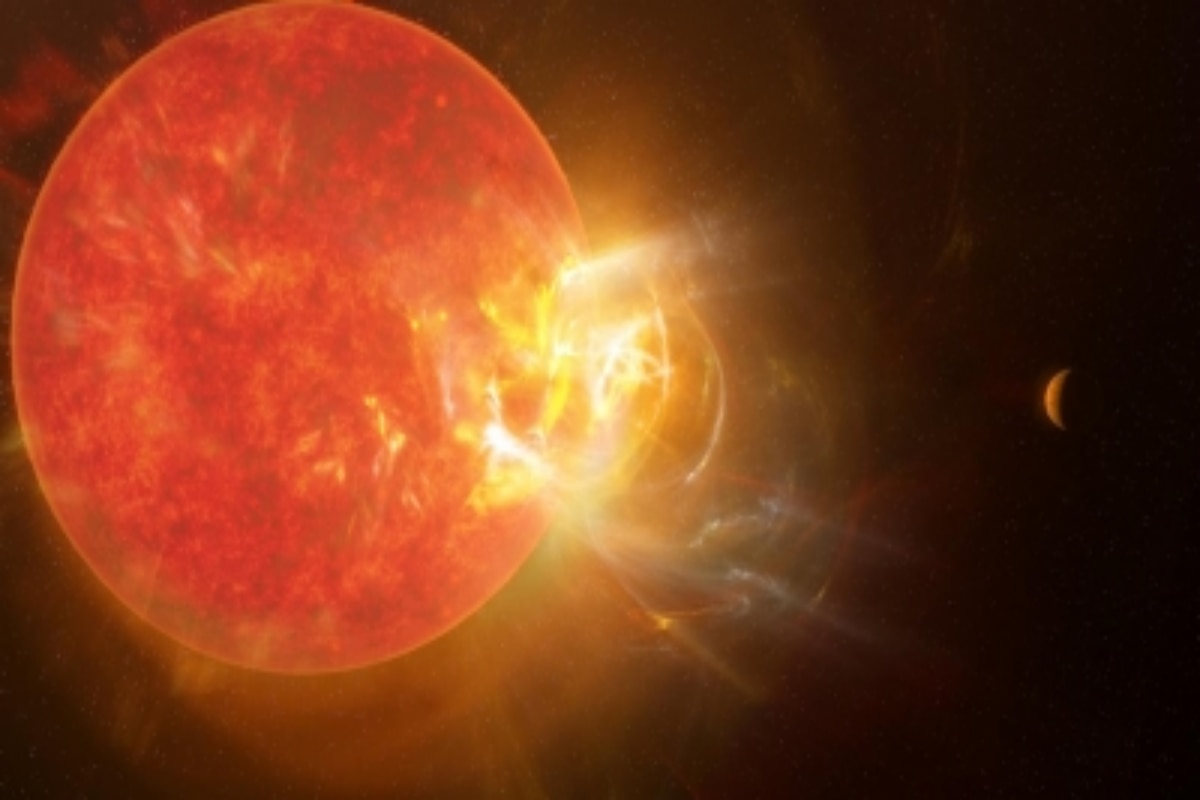
Bangalore: An exoplanet that has 1.5 times the mass of the Sun has been recently discovered by an exoplanet search and study group at the Ahmedabad-based Physical Research Laboratory (PRL). According to a statement released by the Indian Space Research Organisation (ISRO), the exoplanet is 725 light-years away from earth. Interestingly, the exoplanet is 1.4 times the size of Jupiter, the largest planet in our solar system.Also Read – ‘One Sun, One World & One Grid’ Will Enhance Viability Of Solar Projects For All Countries: PM Modi at COP26
“The exoplanet’s mass is found to be 70% and size about 1.4 times that of the Jupiter. These measurements were carried out between December 2020 and March 2021,” the official statement read. The exoplanet has been named as HD 82139 and TOI 1789 by Henry Draper catalogue and TESS catalogue respectively. Its final name will be decided as per IAU nomenclature. Also Read – NASA Launches 12-Year-Long Mission Lucy to Explore Solar System Origin, Trojan Asteroids. All You Need to Know
The discovery was made using Ahmedabad-based PRL’s Advanced Radial-velocity Abu-sky Search (PARAS) optical fiber-fed spectrograph. Its observatory at Mt. Abu in Rajasthan has a 1.2 metre Telescope. Also Read – Empire State Building Size Asteroid May Hit Earth, But Not Untill 2100s: Report
Can Be Categorised As “Hot Jupiter”
The exoplanets that are within the distance of 0.1 AU of their stars are called ‘Hot Jupiters’. The distance between the HD 82139 or TOI 1789 and its nearest star is 0.05 AU. For perspective, the distance between sun and mercury is ten times this distance.
According to the release on ISRO’s official website, “The planet orbits the host star in just 3.2 days.” Due to such proximity, the planet is extremely hot. The surface temperature can reach up to 2000 K. Also, due to such high temperatures, the planet has a very low density of 0.31 gram per cc. The official statement of ISRO called the planet ‘Inflated Hot-Jupiter’.
Discovery To Help In Understanding Evolution Of Planetary Systems
The latest detection can help scientists in understanding the mechanism of Hot Jupiters. It will also help in digging deeper into the process of formation and evolution of planets.
The official statement said, “The detection of such system enhances our understanding of various mechanisms responsible for inflation in Hot-Jupiters and the formation and evolution of planetary systems around evolving and aging stars.”
The discovery team was led by Prof. Abhijit Chakraborty, which includes students and team members, and international collaborators from Europe and the US.
Stay connected with us on social media platform for instant update click here to join our Twitter, & Facebook
We are now on Telegram. Click here to join our channel (@TechiUpdate) and stay updated with the latest Technology headlines.
For all the latest Technology News Click Here
